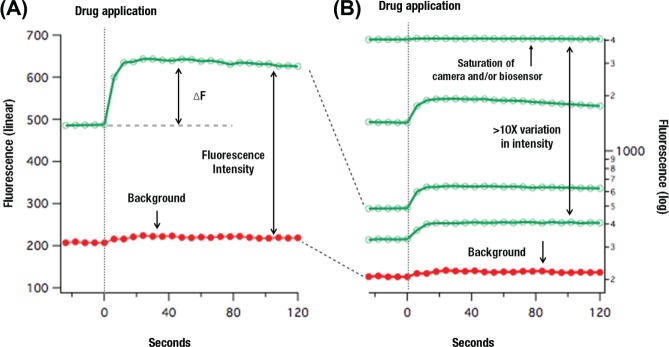Figure 1.
Examples of single-cell responses are plotted (A) to illustrate the consequences of transient transfection and the relevant parameters. The fluorescence signal is collected over time, from individual, transiently transfected cells expressing an Upward DAG sensor (the 2-D1 prototype) and responding to M1 receptor-driven Gq signaling. The change in fluorescence (ΔF) induced by receptor signaling is important since it is the relevant signal. A good starting assumption is that a larger ΔF makes a better sensor. However, the sensor brightness is also important because it defines the separation between the background fluorescence—from the plate, cells, and media—and the sensor fluorescence. Transient transfection is frequently used to express biosensors into cell lines, and comparing individual cells in such an experiment (B) reveals that there can be more than a 10 times variation in fluorescence intensity from cell to cell. This broad range of expression frequently exceeds the dynamic range of an instrument, and the cells above a certain saturation level become unresponsive fluorescence that lowers the measured ΔF of the population. In addition, the overexpression of the sensor can potentially overwhelm the amount of intracellular second messenger, leading to smaller ΔF.

